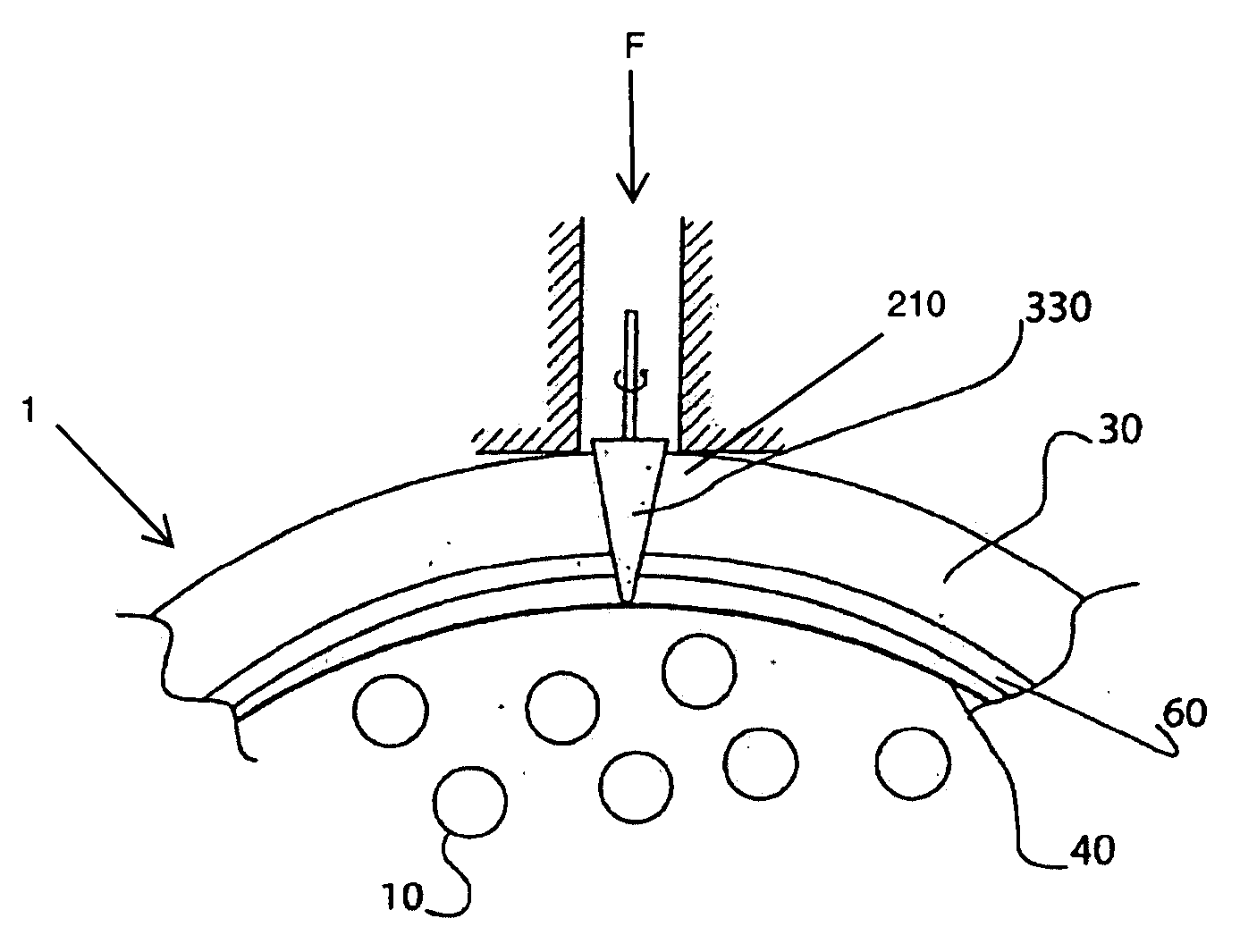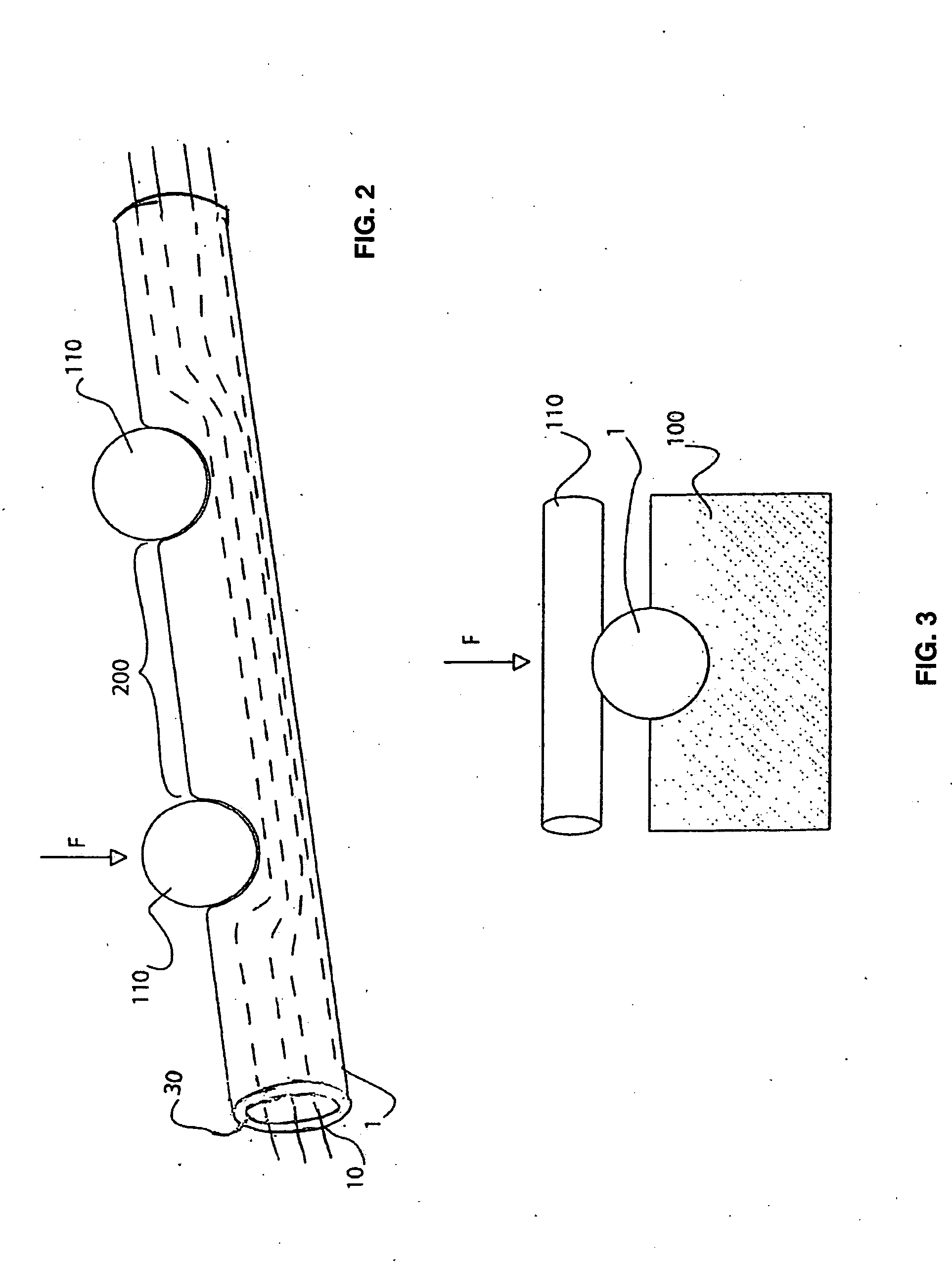Method for Accessing Optical Fibers within a Telecommunication Cable
- Summary
- Abstract
- Description
- Claims
- Application Information
AI Technical Summary
Benefits of technology
Problems solved by technology
Method used
Image
Examples
first embodiment
[0055]According to this first embodiment, the micromodules 10 positioned in the cable 1 are pushed away toward a half-section of the central core 20 (i.e., the half-section opposite to the cutout area 200). The micromodules 10 are pushed away by applying a radial force F at two points of the outer periphery of the jacket 30. These two points of applied radial forces F typically lie on either side of the cutout area 200. The radial forces F may be exerted, for example, by two metal rods 110.
[0056]To facilitate this procedure, a jig 100 having the shape of the cable 1 may be placed under the cable 1. The jig 100 is located on the opposite side of the cable 1 with respect to the rods 110 in order to avoid bending the cable 1 or causing the cable 1 to become out-of-round under the effect of the radial forces F. Each radial force F causes a localized deformation of the jacket 30 of the cable 1. These localized deformations penetrate toward the inside of the longitudinal central core 20 o...
third embodiment
[0062]According to this third embodiment, the pushing tool 310 includes a system of connected members (i.e., legs) that are respectively slid through the insertion windows 210 made in the jacket 30 of the cable 1. These pushing-tool legs are suitable for exerting a radial force F directly on the micromodules 10 (i.e., at two points within the cable 1 corresponding to the cutout area 200).
[0063]For example, the legs of the pushing tool 310 may have an L-shape. A radial force F may be applied to a bar that connects the legs together. A component of this radial force F is thus transmitted to each leg of the pushing tool 310 in order to push the micromodules 10 from the cutout area 200. After the micromodules 10 have been pushed away, an access window may be opened on the cutout area 200 between the two insertion windows 210 using a cutting tool. As before, this procedure considerably reduces the risk of damaging the micromodules 10 with the cutting tool.
[0064]According to a fourth exem...
PUM
 Login to View More
Login to View More Abstract
Description
Claims
Application Information
 Login to View More
Login to View More - R&D
- Intellectual Property
- Life Sciences
- Materials
- Tech Scout
- Unparalleled Data Quality
- Higher Quality Content
- 60% Fewer Hallucinations
Browse by: Latest US Patents, China's latest patents, Technical Efficacy Thesaurus, Application Domain, Technology Topic, Popular Technical Reports.
© 2025 PatSnap. All rights reserved.Legal|Privacy policy|Modern Slavery Act Transparency Statement|Sitemap|About US| Contact US: help@patsnap.com



